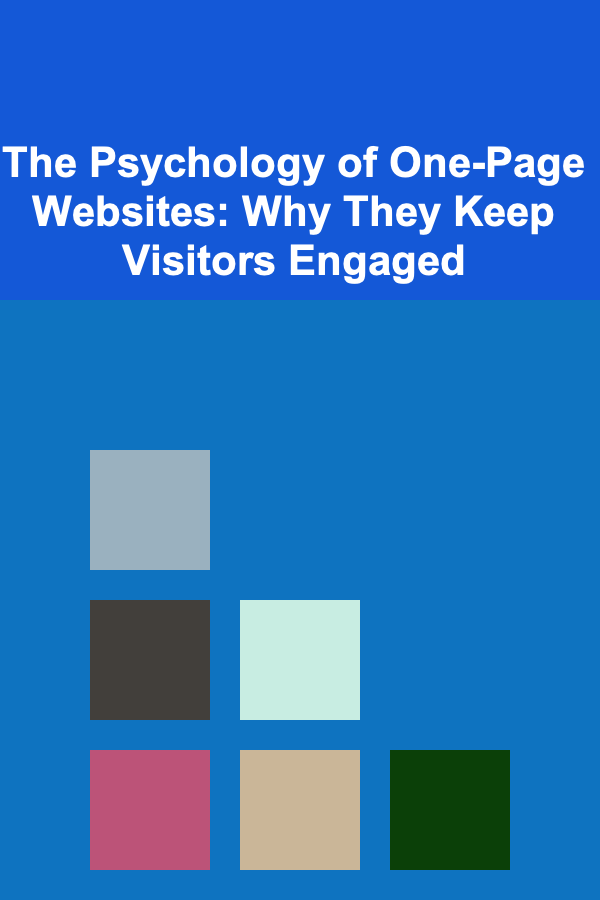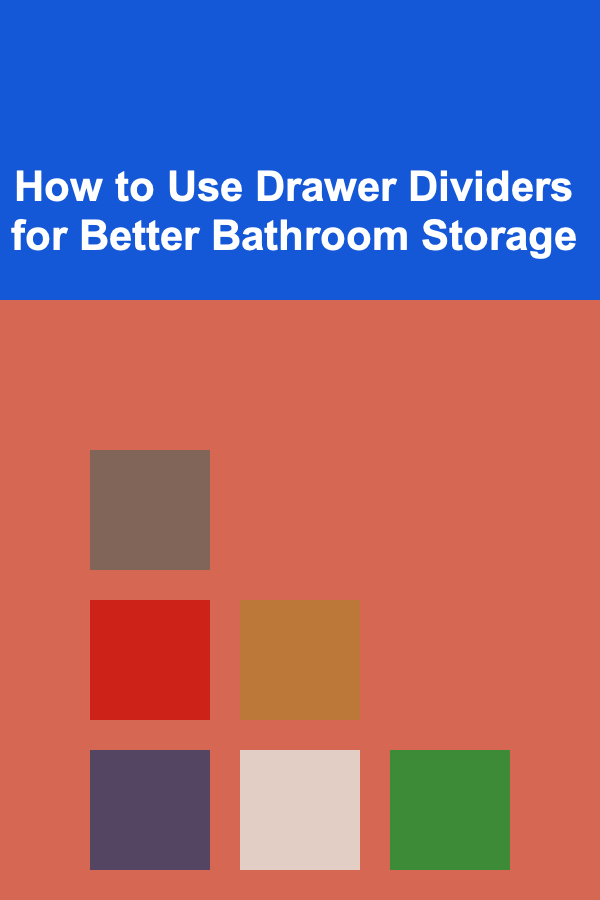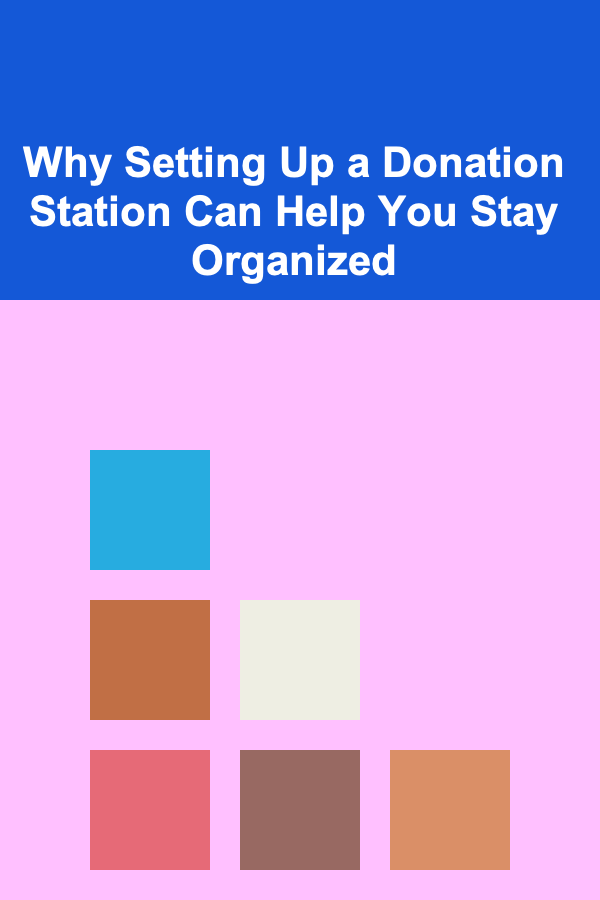
The Psychology of One-Page Websites: Why They Keep Visitors Engaged
ebook include PDF & Audio bundle (Micro Guide)
$12.99$8.99
Limited Time Offer! Order within the next:

In today's fast-paced, information-driven world, people are constantly bombarded with content from all angles. The internet has become a place where users are bombarded with countless websites, all competing for attention. Within this context, the one-page website has emerged as a powerful design trend. Simple yet effective, one-page websites are compelling in their ability to engage visitors and maintain their attention. But why do these websites work so well? What psychological principles make them so effective at keeping users engaged? This article will delve into the psychological aspects of one-page websites and explain why they are so effective at capturing and retaining user attention.
The Appeal of Simplicity: Why Minimalism Works
The human brain has evolved to prioritize efficiency. Our cognitive faculties are built to process information quickly and effortlessly. This is why simplicity is one of the most powerful tools in web design. When a website's layout is clean and minimalist, users can process information more easily and make quicker decisions.
One-page websites capitalize on this desire for simplicity. They eliminate unnecessary complexity, providing a streamlined experience for visitors. This simplicity doesn't just apply to aesthetics; it also influences how the website is structured. With everything on one page, users don't have to navigate through multiple sections or click through various links. Instead, they can scroll through the page in a natural, linear fashion, consuming information as they go.
Cognitive Load and Choice Overload
One of the key psychological reasons why one-page websites are so effective is their ability to reduce cognitive load. Cognitive load refers to the mental effort required to process information. If a website is overloaded with information or design elements, users have to work harder to make sense of it, leading to frustration and potential disengagement.
When users visit a multi-page site, they are forced to make decisions about where to click next. Each additional page introduces another choice, increasing cognitive load and the potential for overwhelm. In contrast, a one-page website minimizes these choices. The visitor is presented with a clear, focused path, leading them through the content in a logical and intuitive order. There's no need to make decisions about where to go next, which significantly reduces mental effort and keeps users engaged.
This principle ties into the psychological phenomenon known as "choice overload." When confronted with too many options, users often experience decision fatigue and are less likely to make a choice at all. One-page websites prevent this problem by presenting information in a simple, digestible format. By reducing the number of decisions visitors have to make, they increase the likelihood of engagement and conversion.
The Power of Visual Storytelling
Humans are wired to connect with stories. Storytelling is an ancient tradition that has evolved as a way for humans to make sense of the world. In the context of web design, storytelling plays a crucial role in keeping visitors engaged.
One-page websites excel at visual storytelling. The format of a one-page site encourages a linear narrative flow. As visitors scroll, they experience a story unfolding before them. The narrative could be about the company's mission, a product's features, or a personal journey. Regardless of the story being told, the key is that the content is cohesive and organized in a way that draws the user in.
Emotional Engagement Through Design
Good storytelling engages the emotions of the viewer. One-page websites use a combination of visuals, typography, color schemes, and layout to guide users through a journey that evokes emotional responses. This emotional engagement is critical for keeping visitors on the page and encouraging them to take action, such as purchasing a product, signing up for a newsletter, or sharing the website with others.
The emotional impact of design can't be understated. Colors, for example, can evoke strong emotional responses. Blue tends to create feelings of trust and security, while red can invoke excitement or urgency. The choice of images can also shape the narrative. A personal brand might choose to include authentic, behind-the-scenes photos, while a tech company might use sleek, futuristic imagery to reinforce its cutting-edge nature. By aligning visual elements with the brand's identity and message, a one-page website can build a powerful emotional connection with visitors.
Building Trust Through Consistency
Trust is another psychological factor that plays a key role in the effectiveness of one-page websites. The way information is presented and the consistency of design elements helps to build trust with visitors. A one-page website often uses cohesive visual cues that guide the user from one section to the next. This consistency, both in terms of design and messaging, reassures visitors that they are on a professional, reliable site.
When visitors feel that the website is trustworthy, they are more likely to engage with the content, whether that means signing up for a service or making a purchase. Consistent design and messaging help eliminate any feelings of uncertainty that might arise when users encounter an unfamiliar site. In this way, one-page websites leverage psychological principles of trust and consistency to keep visitors engaged.
The Psychology of Scrolling: Why It Works
In contrast to clicking, which can feel like a fragmented experience, scrolling is an action that feels continuous and intuitive. This is a critical aspect of why one-page websites are so effective at keeping visitors engaged.
Natural, Intuitive Navigation
When users scroll through a one-page website, they experience a natural flow of information. The continuous nature of scrolling encourages users to keep moving down the page, exploring new sections as they go. This creates a seamless, uninterrupted experience that is more enjoyable and less likely to cause frustration.
On the other hand, websites with multiple pages often force users to stop, think, and make decisions about where to go next. Each click represents a break in the user's journey, which can disrupt the flow and make it harder for users to stay engaged. In contrast, scrolling feels like an effortless action. It's intuitive, especially on mobile devices where users have become accustomed to this kind of navigation.
The Endowment Effect: Investing in the Journey
The endowment effect is a psychological phenomenon where people value things more highly simply because they own them or have invested in them. In the context of a one-page website, the act of scrolling through the content can create a sense of investment in the journey. As users scroll, they engage with the website and start to feel a connection with the content. This connection increases the likelihood that they will stay engaged and take action.
The more users scroll, the more they become "committed" to the website. By the time they reach the end of the page, they are more likely to take action---whether that's purchasing a product, signing up for a service, or simply spending more time engaging with the site.
Persuasion and Conversion: The Psychology of Action
Ultimately, the goal of most websites is to convert visitors into customers, leads, or followers. One-page websites are particularly effective at driving conversions, as they streamline the user journey and focus on a single call to action.
The Principle of Reciprocity
One of the most powerful psychological principles that drive conversions is the principle of reciprocity. According to this principle, people feel an innate desire to return favors. When a website provides something valuable to the user---whether it's free content, a helpful resource, or an exclusive offer---users feel a psychological obligation to return the favor. This often results in conversions, such as signing up for a newsletter, purchasing a product, or sharing the website with others.
One-page websites are particularly well-suited to leverage reciprocity. Since the content is presented in a focused, streamlined manner, it's easier for designers to offer something of value early in the experience. This could be an enticing offer, a free resource, or a compelling testimonial. By providing something useful, one-page websites create a sense of obligation in visitors, encouraging them to take the next step.
The Scarcity Principle
Another psychological principle that can be effectively applied to one-page websites is the scarcity principle. People tend to place higher value on things that are perceived as scarce or limited. One-page websites can use this principle by presenting limited-time offers, countdown timers, or exclusive deals that create a sense of urgency.
When users perceive that they might miss out on something valuable, they are more likely to take action quickly. This principle is often used in conjunction with the principle of reciprocity, creating a powerful combination that encourages conversions.
The Power of a Single Call to Action (CTA)
One of the most powerful aspects of one-page websites is their focus on a single call to action (CTA). By presenting a single, clear goal for the user to accomplish---whether that's making a purchase, signing up for a newsletter, or requesting more information---one-page websites eliminate confusion and streamline the user's decision-making process.
This single CTA is often strategically placed in a way that aligns with the user's emotional journey. For example, after users have scrolled through the page and are emotionally engaged with the brand, they may feel compelled to take action. By focusing the user's attention on one primary goal, one-page websites make it easier for visitors to convert, which is ultimately the key to success.
Conclusion: The Power of Psychological Principles in One-Page Web Design
One-page websites are a prime example of how psychological principles can be used to create effective, engaging web experiences. By reducing cognitive load, using visual storytelling, and leveraging principles like reciprocity, scarcity, and the endowment effect, these websites provide a seamless, intuitive experience that keeps visitors engaged and encourages them to take action. As the web continues to evolve, the simplicity and psychological effectiveness of one-page websites will likely continue to make them a powerful tool in digital marketing and web design.
Reading More From Our Other Websites
- [Hiking with Kids Tip 101] Backpack Basics: Essential Features of the Best Lightweight Kids Hiking Packs
- [Stamp Making Tip 101] Step-by-Step Guide: Turning Your Brand Logo into a High-Impact Stamp
- [Personal Finance Management 101] How to Manage Personal Finance for Gig Workers
- [Tie-Dyeing Tip 101] How to Incorporate Metallic Thread and Glitter into Tie‑Dye Designs Without Bleeding
- [Personal Care Tips 101] How to Choose a Hair Mask with Natural Ingredients
- [Home Holiday Decoration 101] How to Create a Holiday Focal Point with a Statement Tree
- [Rock Climbing Tip 101] When to Replace Your Climbing Helmet: Signs of Wear and Impact Damage
- [Home Maintenance 101] How to Clean and Maintain Your Home's Ventilation System
- [Paragliding Tip 101] Using Real-Time Wind Analysis Apps to Optimize Your Flight Routes
- [Organization Tip 101] How to Use Online Platforms to Share DIY Ideas

How to Clean and Maintain Your Home's Chimney
Read More
How to Update Your Home's Lighting for a Modern Look
Read More
How to Use Drawer Dividers for Better Bathroom Storage
Read More
Why Setting Up a Donation Station Can Help You Stay Organized
Read More
How to Choose the Right IoT Platform as an Architect
Read More
10 Tips for Yearly Garden Maintenance: A Seasonal Checklist
Read MoreOther Products

How to Clean and Maintain Your Home's Chimney
Read More
How to Update Your Home's Lighting for a Modern Look
Read More
How to Use Drawer Dividers for Better Bathroom Storage
Read More
Why Setting Up a Donation Station Can Help You Stay Organized
Read More
How to Choose the Right IoT Platform as an Architect
Read More